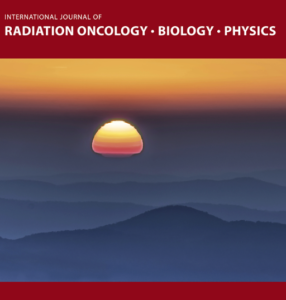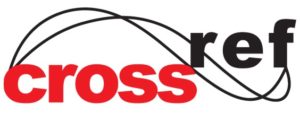
2nd International Webinar on Physics in Medicine and Biology
December 16-17, 2022 | Virtual Meeting
Theme: A New Era for Biomedical Physics & Biology : Opportunities and Challenges
We take immense pleasure in inviting you to attend the 2nd International Webinar on Physics in Medicine and Biology during December 16-17, 2022 | Virtual Meeting. The 2nd International Webinar on Physics in Medicine and Biology focuses on cutting-edge research and innovation and techniques that seek to increase the knowledge about the biomedical Physics and biology.
International Webinar on Physics in Medicine and Biology aims to bring together leading academic scientists, researchers and research scholars to exchange and share their experiences and research results on all aspects of Physics in Medicine and Biology. It also provides a premier interdisciplinary platform for researchers, practitioners and educators to present and discuss the most recent innovations, trends, and concerns as well as practical challenges encountered and solutions adopted in the fields of Physics in Medicine and Biology.
Call for Contributions
Prospective authors are kindly encouraged to contribute to and help shape the conference through submissions of their research abstracts, papers and e-posters. Also, high quality research contributions describing original and unpublished results of conceptual, constructive, empirical, experimental, or theoretical work in all areas of Physics in Medicine and Biology are cordially invited for presentation at the conference. The conference solicits contributions of abstracts, papers and e-posters that address themes and topics of the conference, including figures, tables and references of novel research materials.
Young Scientist Benefits:
Our conferences provide best Platform for your research through oral presentations.
Share the ideas with both eminent researchers and mentors.
Young Scientist Award reorganization certificate and memento to the winners
Young Scientists will get appropriate and timely information by this Forum.
Platform for collaboration among young researchers for better development
Award should motivate participants to strive to realize their full potential which could in turn be beneficial to the field as whole
Important Notes:
Webinar Date: December 16--17, 2022
Webinar tool : Zoom Meeting
Presentation format: PPT/PDF
Poster Presentation : A4 size PDF
Video Presentation : MP4 format
Time Zone : GMT+1 | 13:00 PM London| UK | | USA :08:00 AM New York | USA|
WHY TO ATTEND
With members from around the world focused in Physics, Biomedical Physics and Biology this is your best opportunity to reach the largest assemblage of participants from the universities, colleges, research centers, societies, institutions, labs, associations, communities and companies etc. We want to make a worldwide meet in which data between researchers from the different controls can be effectively traded. The explanation behind bringing the general population at the meetings together is to catalysis empowering trades and connections between experts in different fields, from physical science to engineering. It will make new interdisciplinary systems and permit members to trade know-how and data to accomplish speedier and better results.
The field of Physics, Quantum Physics, Biomedical Physics, Engineering & Nanotechnology, Optics and Mechanics have not only helped the development in different fields in science and technology but also contributed towards the improvement of the quality of human life. The core aim of Biomedical Physics Webinar 2022, Conference is to provide an opportunity for the delegates to meet, interact and exchange innovative ideas in the various areas of Quantum physics and Nuclear Engineering. The joy of attending Quantum Mechanics 2022 brings with it improvement and incremental growth in your approach to do things, in the broader manner to see things in international diversity.
- Physics in Medicine and Biology
- Radiotherapy Physics
- Radiation Dosimetry (ionizing and non-ionizing radiation)
- Biomedical Imaging (e.g. x-ray, MR, ultrasound, optical, nuclear medicine)
- Image Reconstruction and Kinetic Modelling
- Image Analysis and Computer-Aided Detection
- Radiation Medicine Applications
- Radiation Therapies (including non-ionizing radiation)
- Biomedical Optics
- Radiation Protection
- Radiobiology
- Biopyhsical and Medical Information Processing
- Biological Physics
- Physics and Engineering in Medicine
- Medical Physics
- Biomedical Signal Processing
- Biomedical Imaging and Image Processing
- Biomechanics and Robotics
According to the “Quantum Computing Market & Technologies – 2018-2024” report, the global market will grow at a CAGR of 24.6% throughout 2018-2024. During 2017 Quantum Computing technologies performance has increased at an impressive rate; we forecast that 2018-2019 will experience a surge of breakthroughs.
We are in the midst of a “Quantum Computing Supremacy Race”, one that will result in ground-breaking computing power that surpasses the performance of digital supercomputers. The quantum computing technologies have the potential to change long-held dynamics in commerce, intelligence, military affairs and strategic balance of power. If you have been paying attention to the news on quantum computing and the evolution of industrial and national efforts towards realizing a scalable, fault-tolerant quantum computer that can tackle problems, unmanageable to current supercomputing capabilities, then you know that something big is stirring throughout the quantum world. In a way that was unheard of five years ago, quantum physicists are now partnering with corporate tech giants, to develop quantum computing capabilities and technologies as the foundation of a second information age. Advances in quantum computer design, fault-tolerant algorithms and new fabrication technologies are now transforming this “holy grail” technology into a realistic program poised to surpass traditional computation in some applications. With these new developments, the key question that companies are asking is not whether there will be a quantum computer, but who will build it and benefit from it.
According to the new market research report on the by Type Application of physics like (Optical communication & laser processing), Vertical (Commercial, Telecom, Research, Defense, Medical, Automotive, Electronics, & Industrial), & Geography - Global Forecast to 2022", this market is expected to be valued at USD 15.38 Billion by 2022, at a CAGR of 5.2% between 2017 and 2022. The major factors driving the growth of physics include increasing demand from the healthcare sector, environmental sector, financial sector and shift towards production of nano and micro devices, and enhanced performance over the traditional material processing techniques.
Atomic Physics systems has been increasing due to the developing necessities of the industries as wells as the substantial demand. Atomic Physics market is estimated to reach USD 5.60 Billion by 2020, rising at a CAGR of 7.0% through the calculation period of 2015 to 2024. North America probably has the largest share, in the upcoming years; the atomic physics market is expected to see the maximum growth rate in the Asia-Pacific region, with accent on India, China and Japan. Some of the key players in the global atomic physics market comprise Agilent Technologies (U.S.), PerkinElmer (U.S.), Thermo Fisher Scientific (U.S.) and Bruker Corporation (U.S.).
Nuclear Physics is used to define, describe and forecast the market on the basis of process, end users and region. Nuclear Physics market is expected to reach USD 2.85 Billion by 2021 from USD 2.25 Billion in 2016, mounting at a CAGR of 4.8% through the calculation period of 2016 to 2021. We can analyze the size of the nuclear physics market with respect to four main regions i.e., North America, Europe, Asia-Pacific and the Rest of the World. It provides the complete details of the competitive landscape for the market leaders for the opportunities of stakeholders.
Applied Physics is intended for technical and practical use. Applied Physics is established in the basic certainties and essential ideas of the Physical sciences and it utilizes the scientific principles in practical devices and in other related areas such as Lasers, Optics, Semiconductor devices and Nanophotonics. Demand for Physics is always there in the market because of its applications.
In the past market analysis it was suggested that the worldwide market for Physics was expected to reach around £3.4 billion by 2018. As indicated by later gauges by market forecasters BCC research, the global market for Physics based industries was worth significantly more, about £4.3 billion more in 2017 and is expected to increase around£6.2 billion by 2018, proportionate to the annual growth of 7.7%.Extending applications in the Cardiac, Breast MRI and Neurologic areas are expected to drive the world market which was anticipated to increase from£770 million in 2015 to reach around £1.2 billion by 2019 which is equivalent to yearly development 9.3% a year.
Speaker Opportunities : Oral Presentation, Poster Presentation, E-Poster
Renowned Speakers
KEY TOPICS
- Speed
- Average Speed
- Relative Motion
- Acceleration
- Weight Non-contact Force
- Mass
- Gravitational Field Strength
- Field
- Equilibrium
- Deformation
- Linear Relationship
- Newton
- Resultant Force
- Friction
- Tension
- Gravitational Potential Energy Store
- Elastic Energy Store
- Dissipated
- Work
- Lever
- Input Force
- Output Force
- Displacement
- Deformation
- Thermal Conductor
- Thermal Insulator
- Temperature
- Thermal Energy
- Conduction
- Convection
- Radiation
- Vibration
- Longitudinal Wave
- Optical astronomy
- Compression
- Contact Force
- Fluid Pressure
- Upthrust Atmospheric Pressure
- Potential Difference (voltage)
- Resistance
- Electrical Conductor
- Electrical Insulator
- Negatively Charged
- Positively Charged
- Electrons Charged Up
- Electrostatic
- Force Current
- Volume
- Pitch
- Amplitude
- Wavelength
- Frequency
- Vacuum
- Oscilloscope
- Absorption
- Auditory
- Range
- Echo
- Incident Ray
- Reflected Ray
- Normal Line
- Angle of Reflection
- Angle of Incidence
- Refraction
- Scattering
- Transparent
- In Series
- Space physics
- In Series
- In Parallel
- Electromagnet
- Solenoid
- Core Magnetic
- Force Permanent
- Magnet Magnetic
- Poles
- Power Energy
- Resource Non-Renewable
- Renewable
- Fossil Fuels
- Thermal Energy
- Store Chemical Energy
- Store
- Kinetic Energy
- Store Translucent
- Opaque
- Convex Lens
- Concave lens
- Retina
- Ultrasound
- Ultraviolet (UV)
- Microphone
- Loudspeaker
- Pressure
- Wave
- Waves Transverse
- Wave Transmission
- Nano & Quantum Optics
- Optical Imaging and Sensing
- Photonics and its Devices
- Optics in Astronomy and Astrophysics
- Space Physics

ABOUT US
Scientific Meditech is associated with vitalizing and refining the information about Science, Engineering, and Technology to break down the past, research display and plan another type of connected science in future.
For more details, please visit: Scientific Meditech
Enquiry
CONTACT US
61 Bridge Street Kington HR53DJ, UK
Phone: +44-8874787969
Email: contact@scientificmeditech.com
watsonrose92@gmail.com
physicsbiomedical@gmail.com



